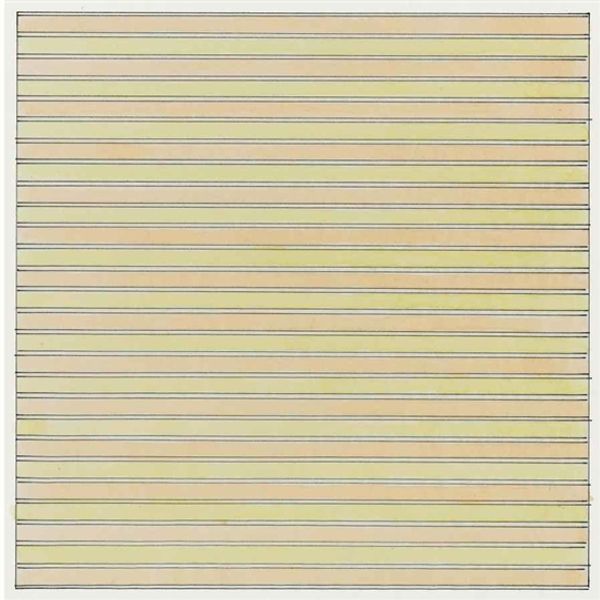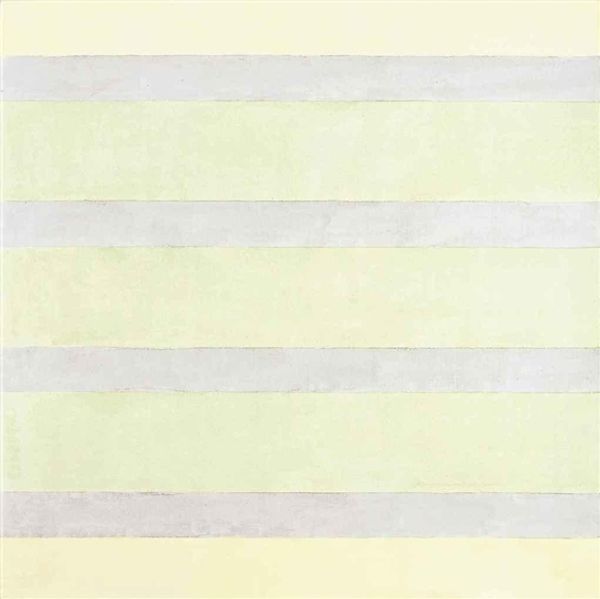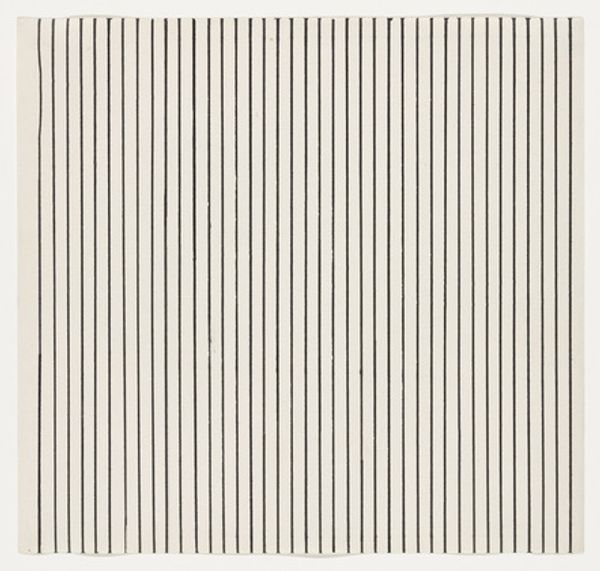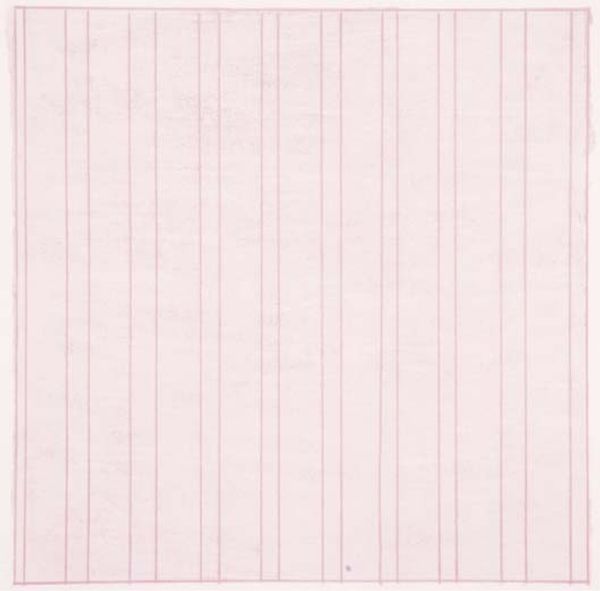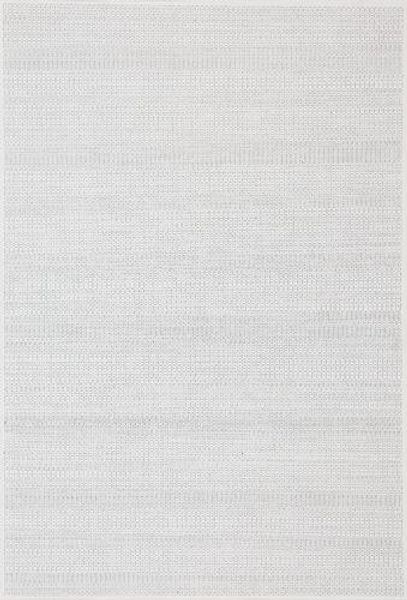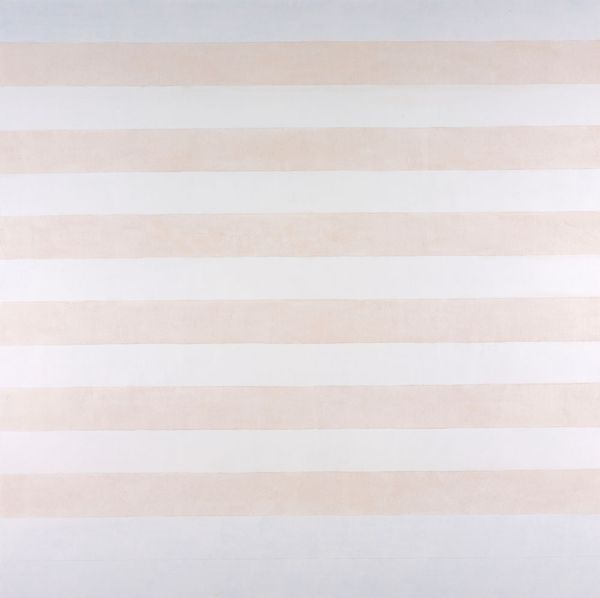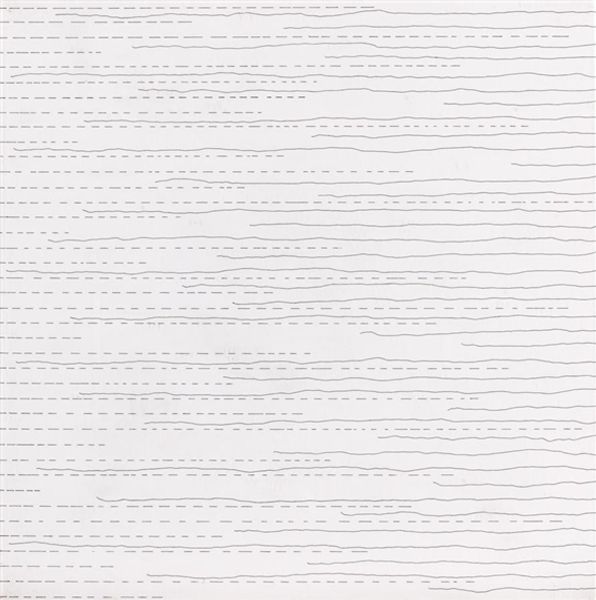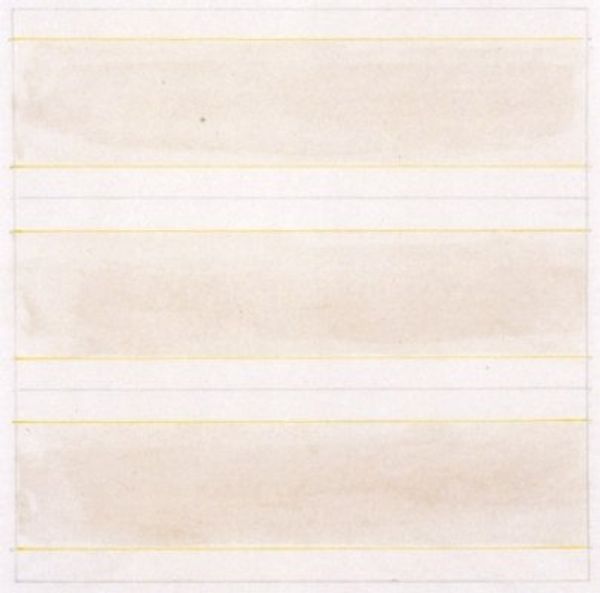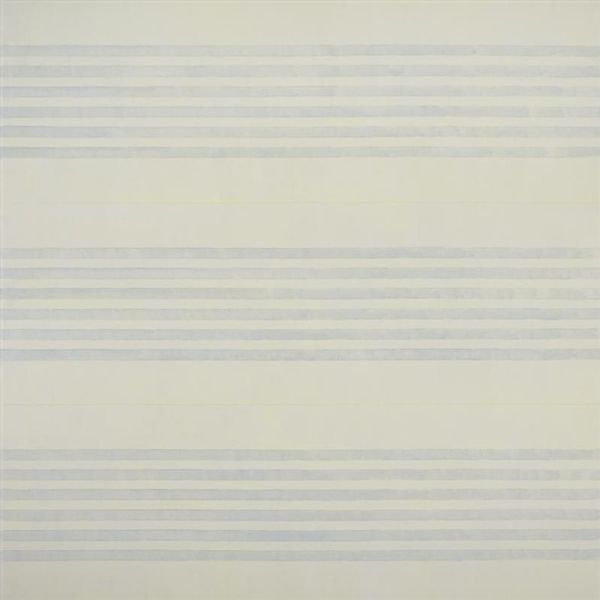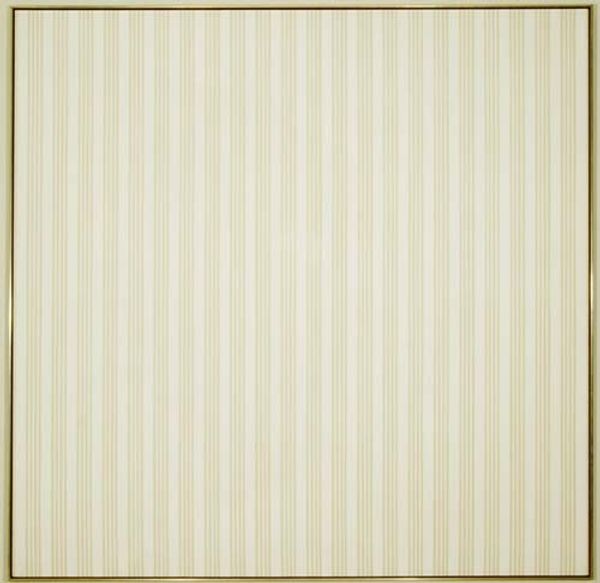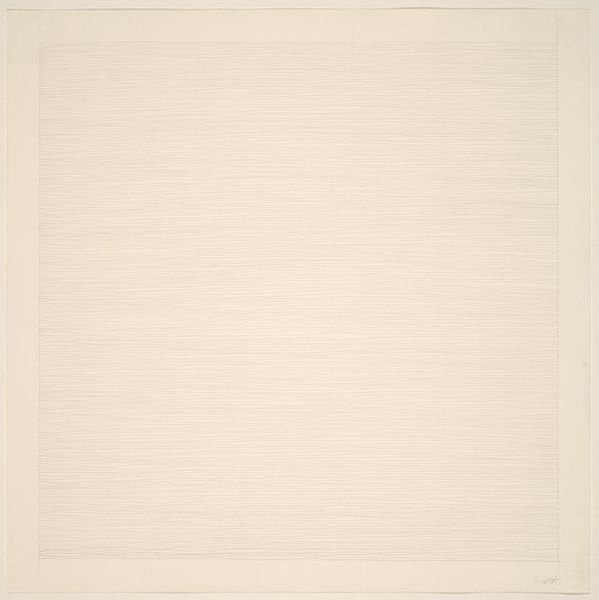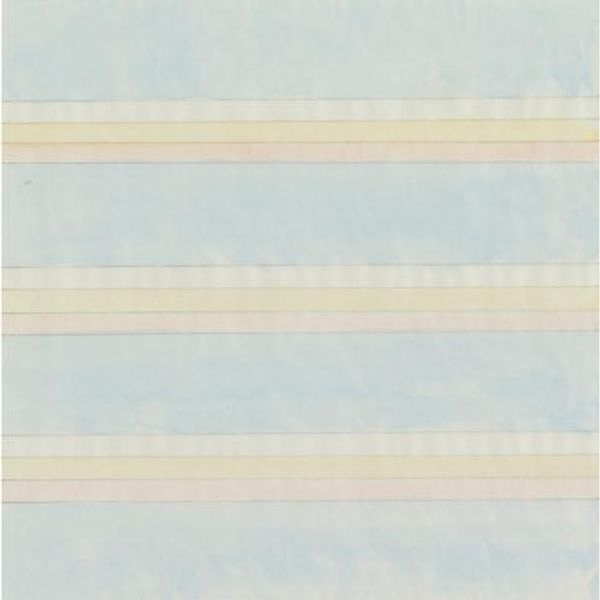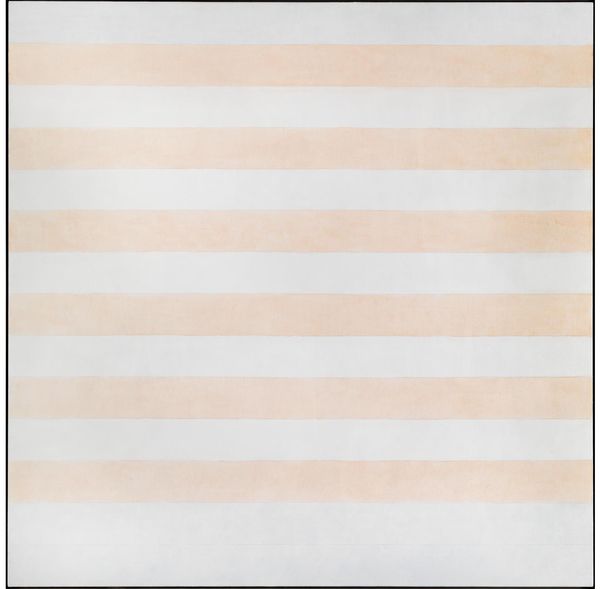
Copyright: Agnes Martin,Fair Use
Curator: Let's talk about Agnes Martin's "Untitled #4" from 1989. What strikes you immediately about this piece? Editor: It's so hushed. Like a whisper. A barely-there grid of horizontal lines against washes of the softest grey. Makes me want to just breathe deep and slow. What about you, from your perspective? Curator: For me, it raises questions about the labor and intention embedded in its seemingly simple composition. Consider Martin’s methodical process, her use of acrylic and graphite on canvas, and how those material choices articulate minimalist principles. Editor: You’re right, the apparent simplicity belies the intricate craft, doesn’t it? I bet the canvas itself has a story – the texture, the weave… How it receives that pale pigment. Almost ghostly, the layers upon layers. I keep imagining the hand behind the line. Curator: Absolutely, the subtle imperfections become significant, drawing attention to the act of creation itself. How does Martin use industrial materials like graphite in service of transcendent and ethereal abstraction? Editor: Transcendent is a good word. Though some might scoff and say "It's just lines!", there's a serenity that comes from repetition, from the devotion to that simple act. It almost feels meditative, a kind of visual mantra. Curator: Consider also how Martin challenges notions of authorship, creating an artwork that prioritizes openness and interpretation. There's little ego here, allowing the viewer to actively participate. It disrupts artistic and social norms related to production. Editor: Yeah, no ego needed, just…presence. You've helped me to see past the perceived sparseness. It makes me question our desire for big statements in art when maybe quiet contemplation is revolutionary enough. It seems she asks, can art still touch us profoundly with so little apparent "doing?" Curator: And it's in the nuances, the making apparent what might otherwise disappear from notice, that her most powerful work happens. Editor: Right, I think I understand better the work Martin set out to do. What a beautiful tension to carry as one walks away.
Comments
No comments
Be the first to comment and join the conversation on the ultimate creative platform.

